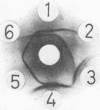Abstract
Purification of progenitor toxin of Clostridium botulinum type B strain Okra was undertaken by sequential steps of acid precipitation, extraction, ammonium sulfate precipitation, ribonuclease digestion, acid precipitation, protamine treatment, sulphopropyl-Sephadex chromatography, and Sephadex G-200 gel filtration. Two different molecular-sized toxins, named large (L) and medium (M) toxins, were obtained. L toxin was centrifugally homogeneous but electrophoretically heterogeneous. It contained 2.5 × 108 to 3.0 × 108 mean lethal doses per mg of nitrogen, and its sedimentation constant was 16S. M toxin was centrifugally and electrophoretically homogeneous. It contained 5.5 × 108 to 6.0 × 108 mean lethal doses per mg of nitrogen, and its sedimentation constant was 12S. The presence of both L and M toxins in spent culture was demonstrated. It seems justified, therefore, to call both progenitor toxins. Both consisted of toxic and nontoxic components. The toxic components of L and M toxins appeared to be identical with each other. The nontoxic component of L toxin was 12S and possessed a hemagglutinin activity of about 0.5% that of type A crystalline toxin; that of M toxin was 7S and possessed no hemagglutinin activity. They were antigenically related but not identical.
Full text
PDF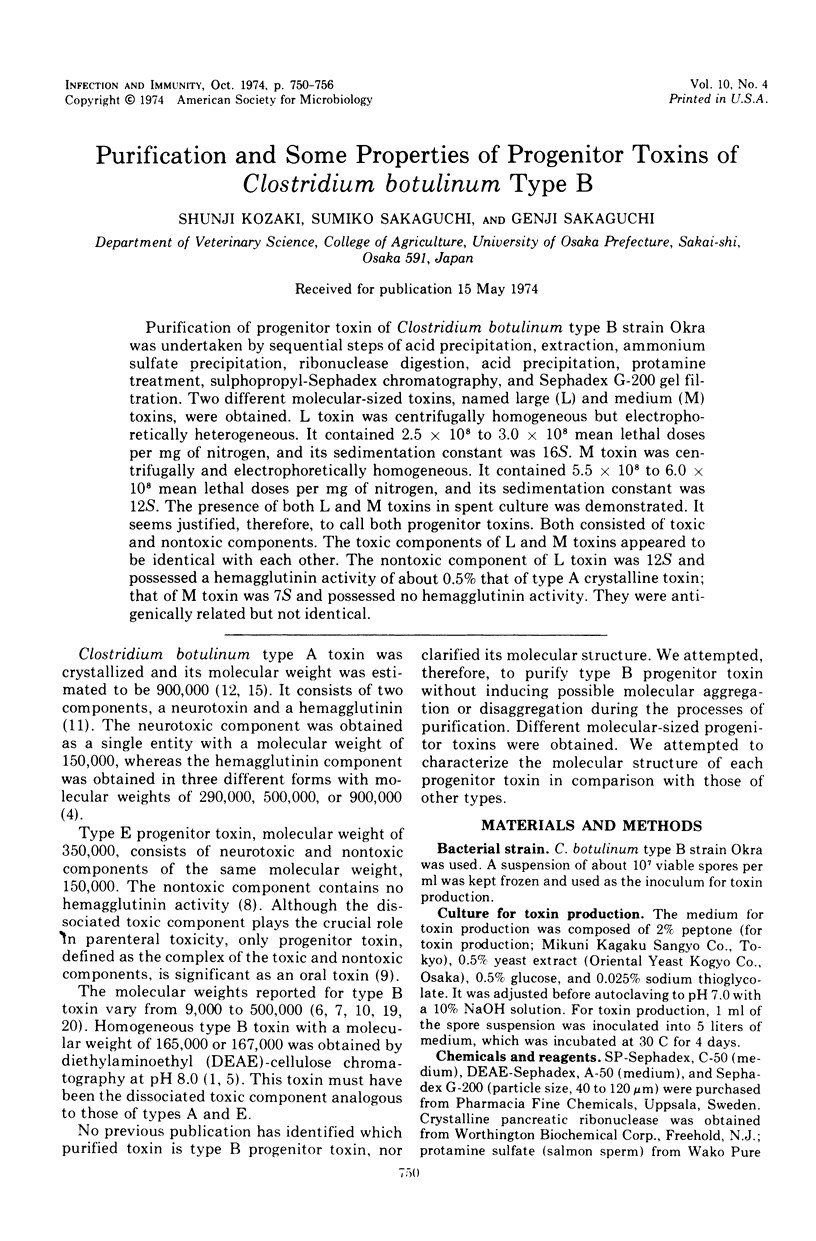
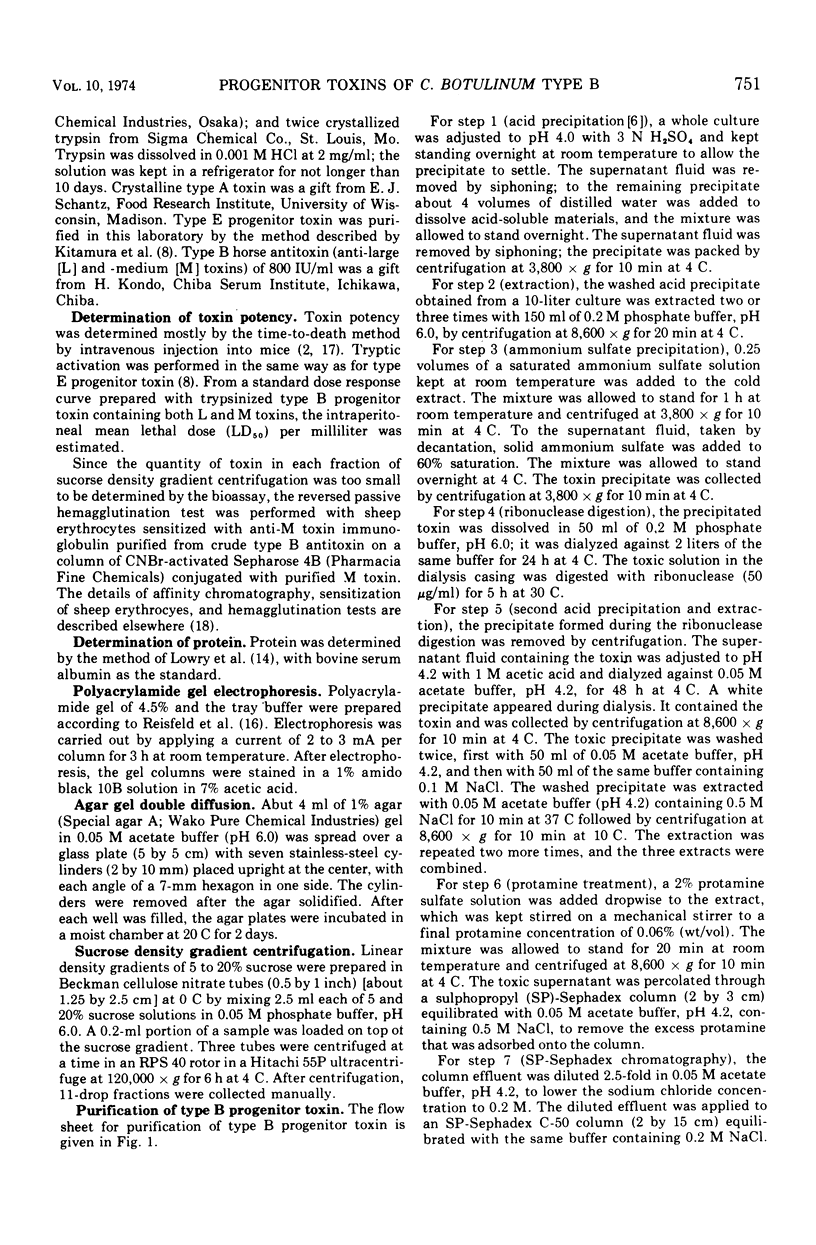
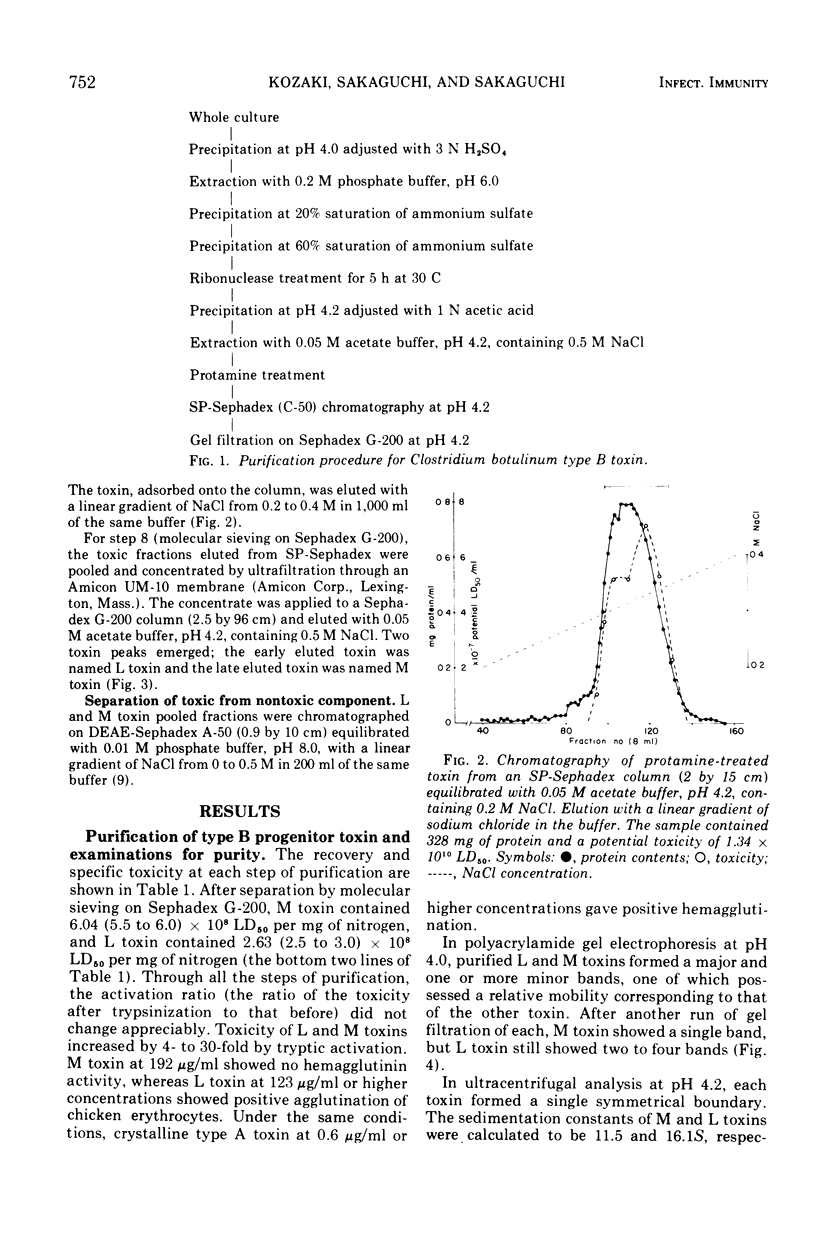
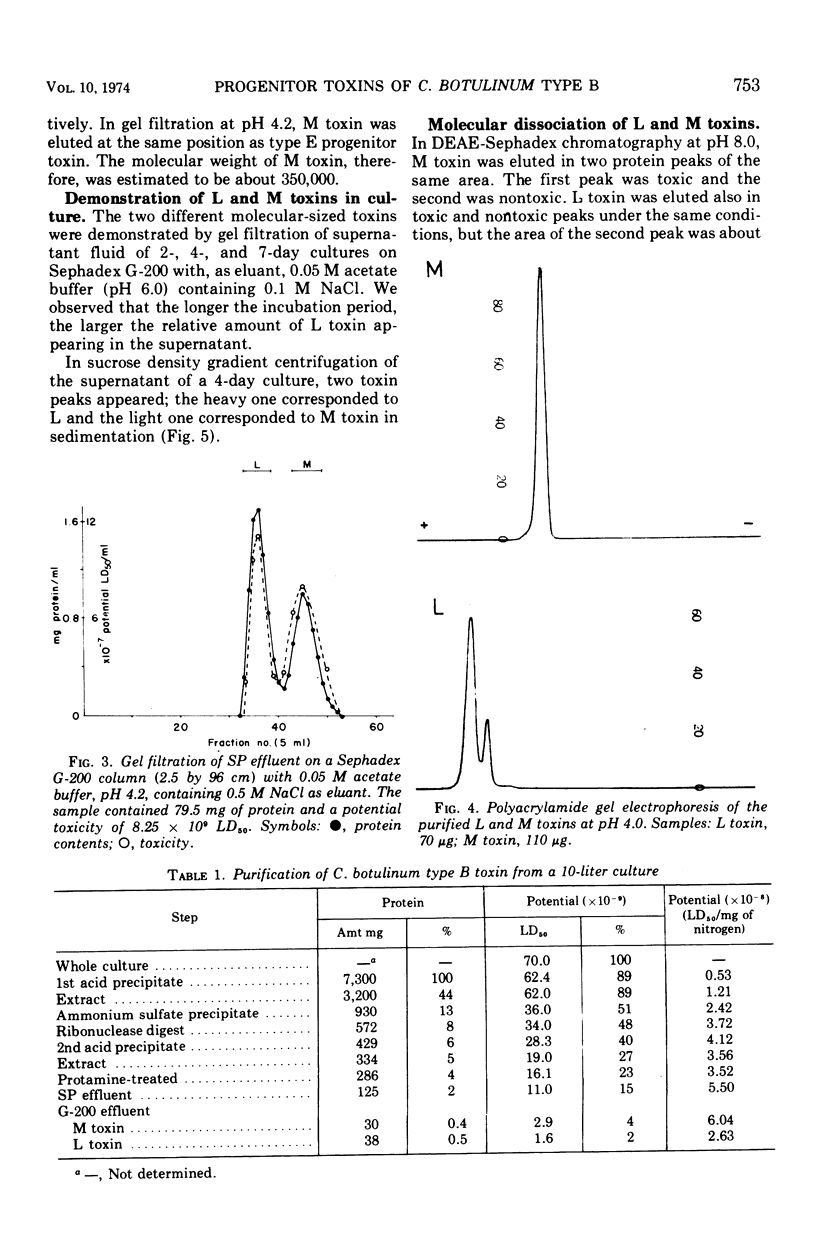
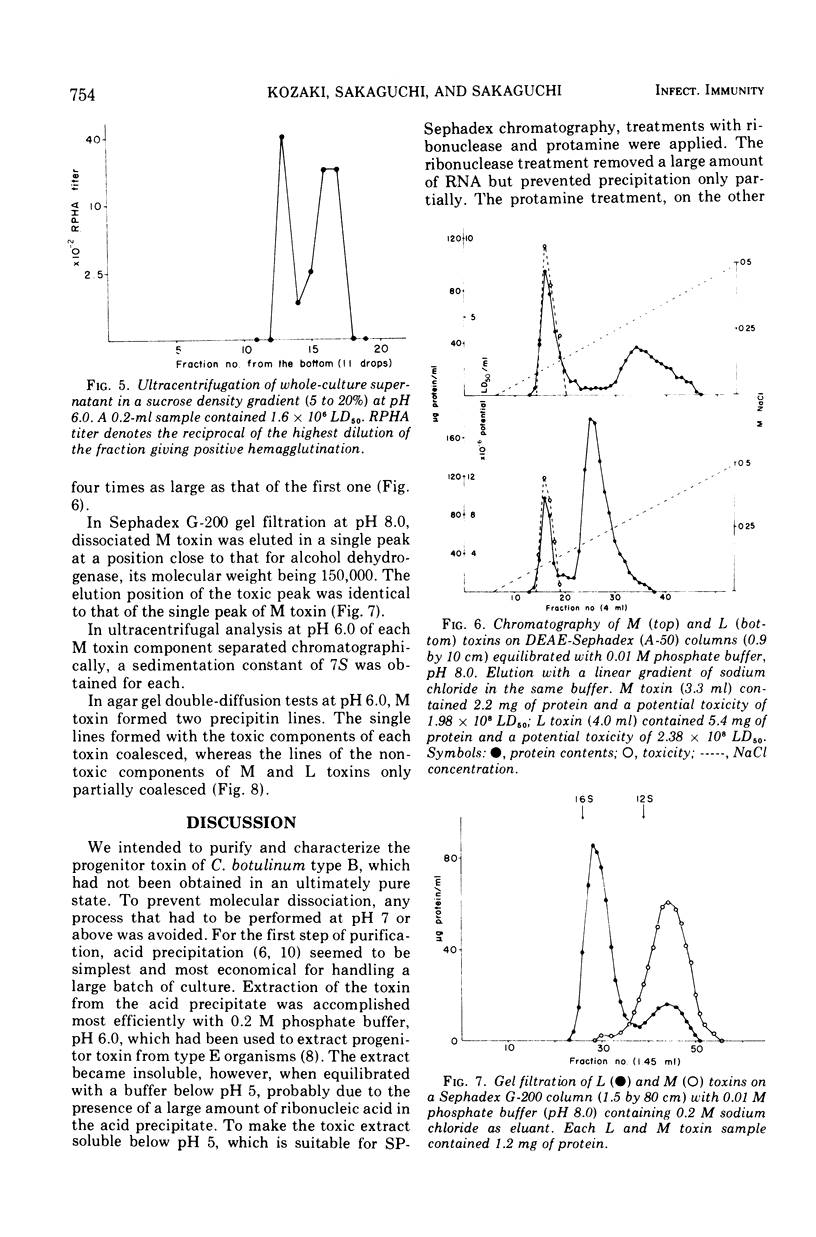
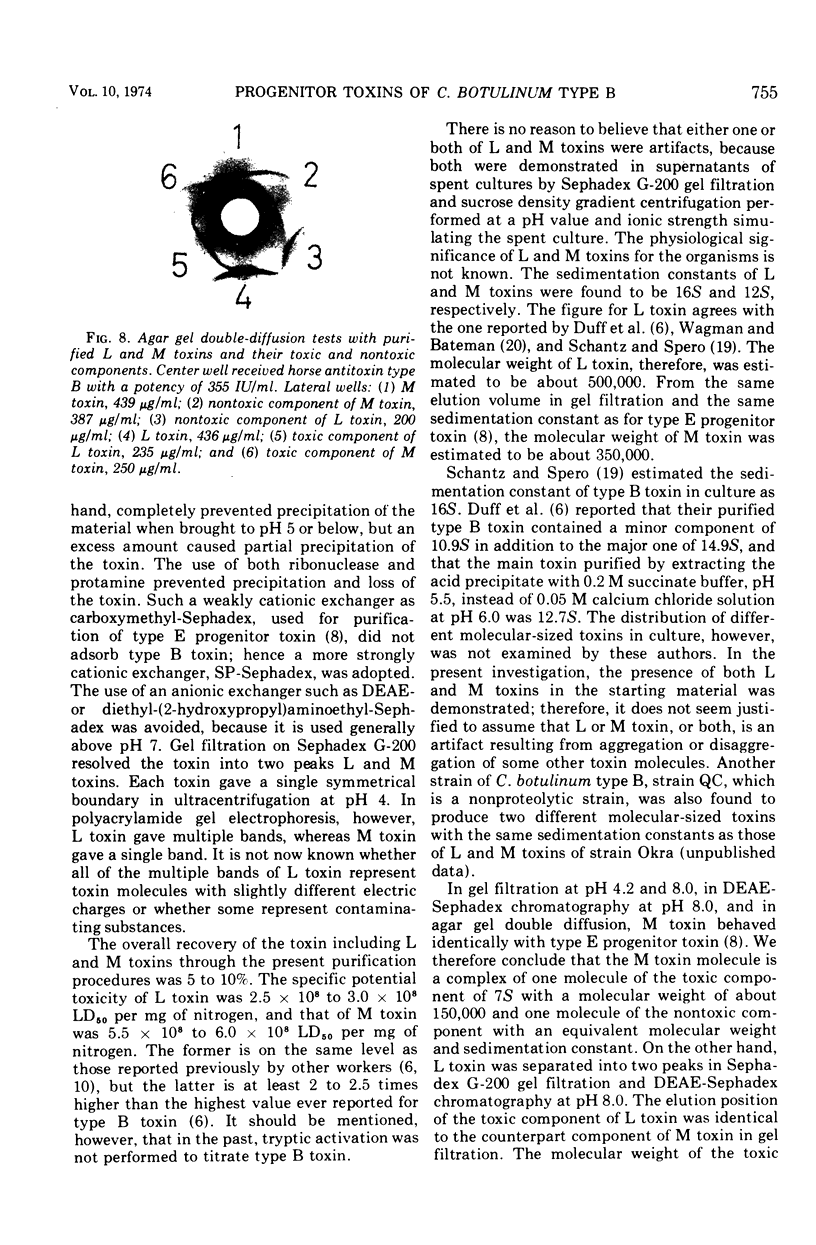
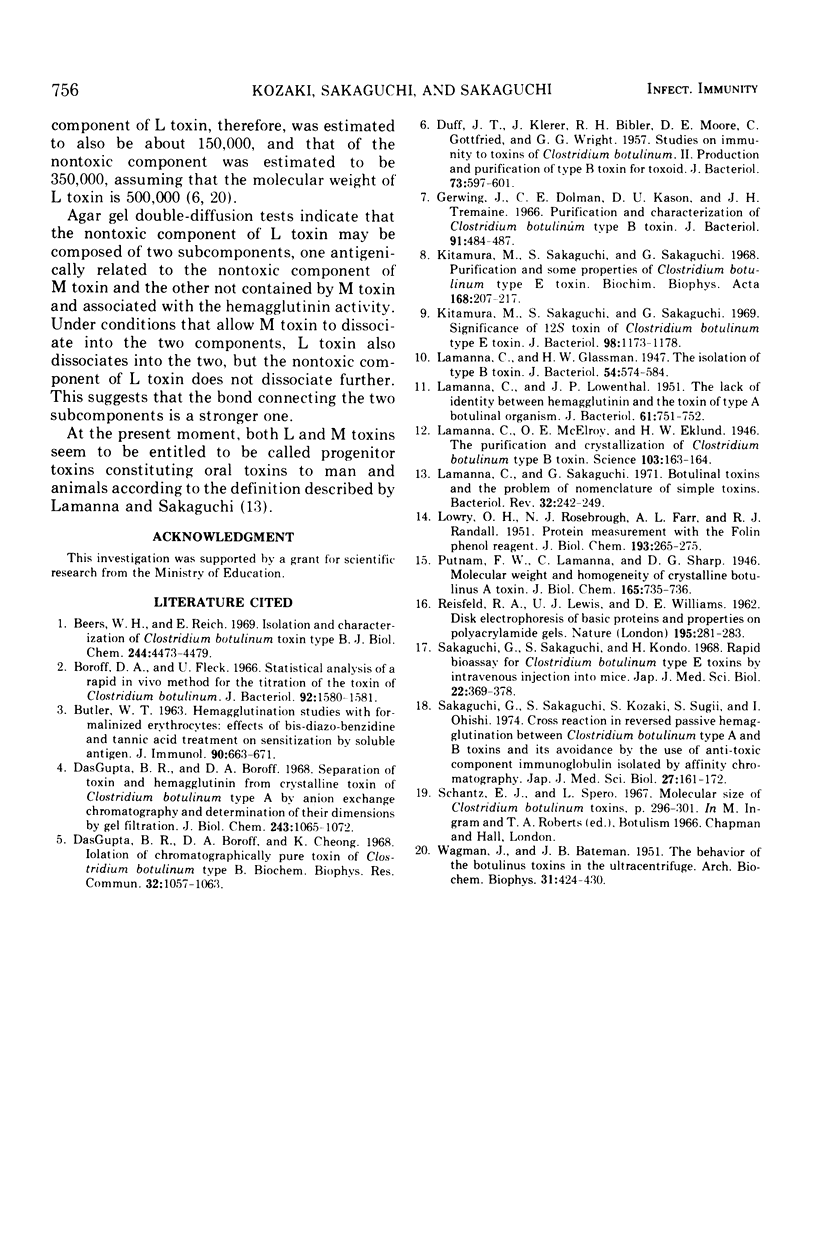
Images in this article
Selected References
These references are in PubMed. This may not be the complete list of references from this article.
- BUTLER W. T. HEMAGGLUTINATION STUDIES WITH FORMALINIZED ERYTHROCYTES. EFFECT OF BIS-DIAZO-BENZIDINE AND TANNIC ACID TREATMENT ON SENSITIZATION BY SOLUBLE ANTIGEN. J Immunol. 1963 May;90:663–671. [PubMed] [Google Scholar]
- Beers W. H., Reich E. Isolation and characterization of Clostridium botulinum type B toxin. J Biol Chem. 1969 Aug 25;244(16):4473–4479. [PubMed] [Google Scholar]
- Boroff D. A., Fleck U. Statistical analysis of a rapid in vivo method for the titration of the toxin of Clostridium botulinum. J Bacteriol. 1966 Nov;92(5):1580–1581. doi: 10.1128/jb.92.5.1580-1581.1966. [DOI] [PMC free article] [PubMed] [Google Scholar]
- DUFF J. T., KLERER J., BIBLER R. H., MOORE D. E., GOTTFRIED C., WRIGHT G. G. Studies on immunity to toxins of Clostridium botulinum. II. Production and purification of type B toxin for toxoid. J Bacteriol. 1957 May;73(5):597–601. doi: 10.1128/jb.73.5.597-601.1957. [DOI] [PMC free article] [PubMed] [Google Scholar]
- DasGupta B. R., Boroff D. A., Cheong K. Isolation of chromatographically pure toxin of Clostridium botulinum type B. Biochem Biophys Res Commun. 1968 Sep 30;32(6):1057–1063. doi: 10.1016/0006-291x(68)90137-x. [DOI] [PubMed] [Google Scholar]
- DasGupta B. R., Boroff D. A. Separation of toxin and hemagglutinin from crystalline toxin of Clostridium botulinum type A by anion exchange chromatography and determination of their dimensions by gel filtration. J Biol Chem. 1968 Mar 10;243(5):1065–1072. [PubMed] [Google Scholar]
- Gerwing J., Dolman C. E., Kason D. V., Tremaine J. H. Purification and characterization of Clostridium botulinum type B oxin. J Bacteriol. 1966 Feb;91(2):484–487. doi: 10.1128/jb.91.2.484-487.1966. [DOI] [PMC free article] [PubMed] [Google Scholar]
- Kitamura M., Sakaguchi S., Sakaguchi G. Purification and some properties of Clostridium botulinum type-E toxin. Biochim Biophys Acta. 1968 Oct 21;168(2):207–217. doi: 10.1016/0005-2795(68)90144-x. [DOI] [PubMed] [Google Scholar]
- Kitamura M., Sakaguchi S., Sakaguchi G. Significance of 12S toxin of Clostridium botulinum type E. J Bacteriol. 1969 Jun;98(3):1173–1178. doi: 10.1128/jb.98.3.1173-1178.1969. [DOI] [PMC free article] [PubMed] [Google Scholar]
- LAMANNA C., LOWENTHAL J. P. The lack of identity between hemagglutinin and the toxin of type A botulinal organism. J Bacteriol. 1951 Jun;61(6):751–752. doi: 10.1128/jb.61.6.751-752.1951. [DOI] [PMC free article] [PubMed] [Google Scholar]
- LOWRY O. H., ROSEBROUGH N. J., FARR A. L., RANDALL R. J. Protein measurement with the Folin phenol reagent. J Biol Chem. 1951 Nov;193(1):265–275. [PubMed] [Google Scholar]
- Lamanna C., Glassman H. N. The Isolation of Type B Botulinum Toxin. J Bacteriol. 1947 Nov;54(5):575–584. doi: 10.1128/jb.54.5.575-584.1947. [DOI] [PMC free article] [PubMed] [Google Scholar]
- Lamanna C., Sakaguchi G. Botulinal toxins and the problem of nomenclature of simple toxins. Bacteriol Rev. 1971 Sep;35(3):242–249. doi: 10.1128/br.35.3.242-249.1971. [DOI] [PMC free article] [PubMed] [Google Scholar]
- REISFELD R. A., LEWIS U. J., WILLIAMS D. E. Disk electrophoresis of basic proteins and peptides on polyacrylamide gels. Nature. 1962 Jul 21;195:281–283. doi: 10.1038/195281a0. [DOI] [PubMed] [Google Scholar]
- Sakaguchi G., Sakaguchi S., Kondo H. Rapid bioassay for Clostridium botulinum type-E toxins by intravenous injection into mice. Jpn J Med Sci Biol. 1968 Dec;21(6):369–378. doi: 10.7883/yoken1952.21.369. [DOI] [PubMed] [Google Scholar]
- Sakaguchi G., Sakaguchi S., Kozaki S., Sugii S., Oishi I. Cross reaction in reversed passive hemagglutination between Clostridium botulinum type A and B toxins and its avoidance by the sue of anti-toxic component immunoglobulin isolated by affinity chromatography. Jpn J Med Sci Biol. 1974 Jun;27(3):161–172. doi: 10.7883/yoken1952.27.161. [DOI] [PubMed] [Google Scholar]
- WAGMAN J., BATEMAN J. B. The behavior of the bolulinus toxins in the ultracentrifuge. Arch Biochem Biophys. 1951 May;31(3):424–430. doi: 10.1016/0003-9861(51)90158-0. [DOI] [PubMed] [Google Scholar]



